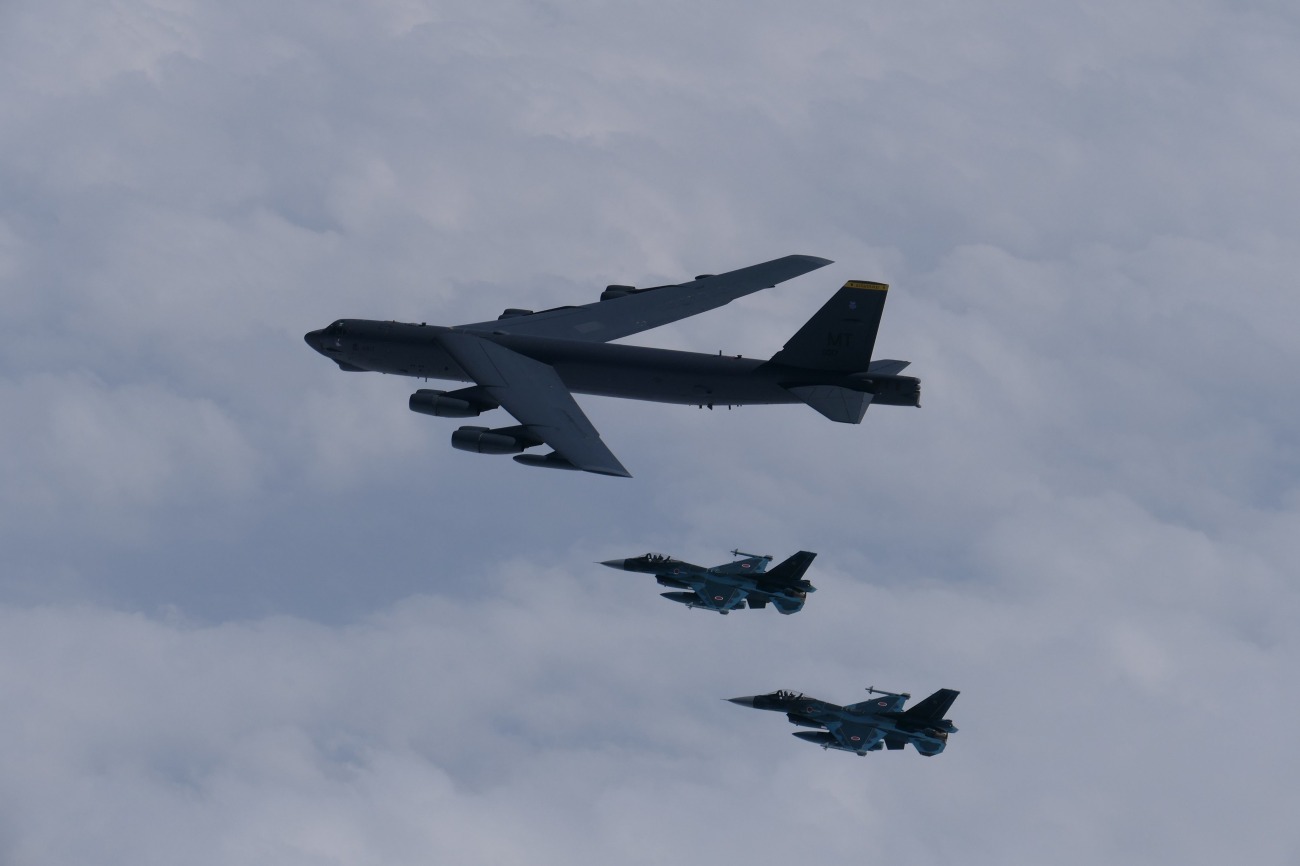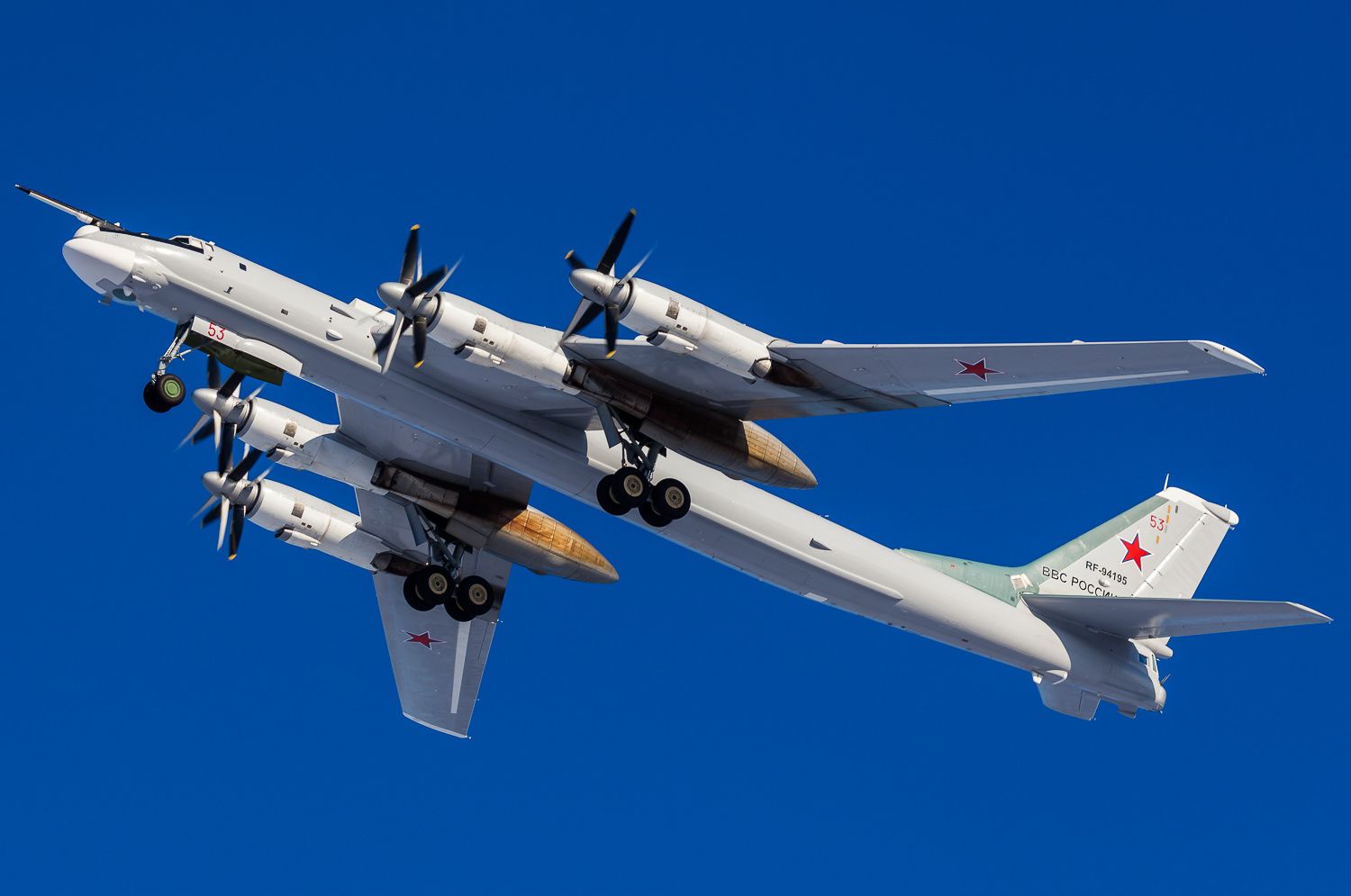As Chinese and Russian bombers, H-6 and Tu-95, flexed muscles near Alaska, the United States has disclosed that its two B-52 Stratofortress bombers recently undertook a unique mission within Alaska’s airspace.
The US Air Force announced on July 25 that two B-52 bombers from Minot Air Force Base, North Dakota, participated in the Arctic Defender exercise at Joint Base Elmendorf-Richardson, Alaska.
Arctic Defender is a field training exercise led by the German Air Force, where fighter pilots from various countries conduct air warfare operations in Alaska, adhering to NATO standards.
This deployment, which took place on July 16, highlights the escalating military activity in the Arctic region. The exercise marked a notable “milestone in military cooperation and readiness,” the service said.
This rare deployment used Arctic Defender to integrate large-force employment into Exercise Agile Warbird, part of Minot AFB’s Agile Combat Employment (ACE) training.
“The B-52 was part of the strike package for the Arctic Defender sortie on July 16,” explained B-52 co-pilot Capt. Shinryu Aoyama. The ACE exercise aimed to enhance operational agility and effectiveness in challenging environments, with the B-52 crews playing a key role.
Capt. David Mills, from Minot’s 69th Bomb Squadron, said, “It’s not every day that a B-52 comes up to Alaska airspace and takes part in an exercise.”
Despite facing challenging weather conditions, including rain and overcast skies, the crew found the exercise invaluable for training and operational readiness. The mission also provided an opportunity to refine their skills amidst ongoing runway repairs at Minot.
The integration with allied forces added another layer of complexity, with one pilot highlighting the benefits of working alongside German tactical air command and coalition nation fighters.
Forget J-20, China’s H-20 Stealth Bomber Threatens ‘Easy Penetration’ Of LAC; How Can IAF Respond?
“One of the key takeaways from this exercise was the seamless integration and operational synergy with our allies,” Mills said. “It’s crucial for the bomber community to foster collaboration, particularly as we prepare for high-end scenarios in the Pacific region.”
The exercise also involved overcoming logistical challenges, such as adapting to real-time mission changes and coordinating data updates while in flight.
These complexities reflect the evolving nature of modern military operations and underscore the US Air Force’s commitment to maintaining readiness in the face of global threats.

Alaska Becomes “Epicentre” Of Chinese, Russian Bombers
The recent deployment of US bombers in Alaska’s airspace gains significant relevance against the backdrop of recent Russian and Chinese strategic bombers entering the Alaska Air Defense Identification Zone (ADIZ).
This rare US bomber activity comes amid growing military maneuvers by these nations, underscoring the Arctic region’s strategic importance and their respective efforts to assert their interests.
On July 25, Defense Secretary Lloyd Austin confirmed that the recent close approach of Russian and Chinese bombers to the Alaskan coast was unprecedented.
The two nations’ bombers came within 200 miles of US territory, marking the first joint operation of this nature. This coordinated flight prompted the US and Canada to deploy F-35, F-16, and F-18 fighter jets to monitor and shadow the approaching aircraft.
Austin said that the joint operation was a notable event, indicating that it was the first time such a close collaboration between Russia and China had occurred near North American airspace.

He specified that the bombers’ closest approach was approximately 200 miles from the coast. This maneuver triggered heightened concerns in Washington and Ottawa about the emerging coordination between Beijing and Moscow so close to US and Canadian borders.
Despite the high alert, Austin assured that the bombers’ flight had been tracked throughout its journey and was anticipated.
He suggested that the mission was likely planned well in advance, though the specific reasons for its scheduling remained unclear and could only be explained by the Chinese and Russian authorities.
Although it is not unusual for Russian aircraft to approach US airspace near Alaska, this joint flight signifies China’s more assertive stance and its strengthening military relationship with Russia.

Meanwhile, Russia has accused Washington of exacerbating tensions in the Arctic and dismissed US claims that the increased cooperation between Russia and China could destabilize the region.
On the other hand, China’s Ministry of National Defense did not release formal statements regarding the patrol.
However, Senior Colonel Zhang Xiaogang said that the operation was the eighth such joint strategic cruise since 2019, aimed at enhancing collaboration between the two air forces and deepening strategic trust and cooperation.
- Contact the author at ashishmichel(at)gmail.com
- Follow EurAsian Times on Google News




